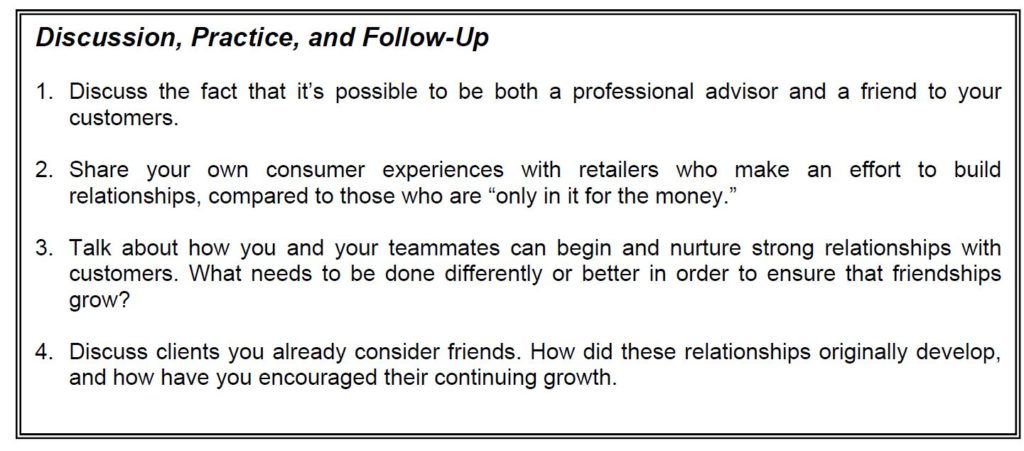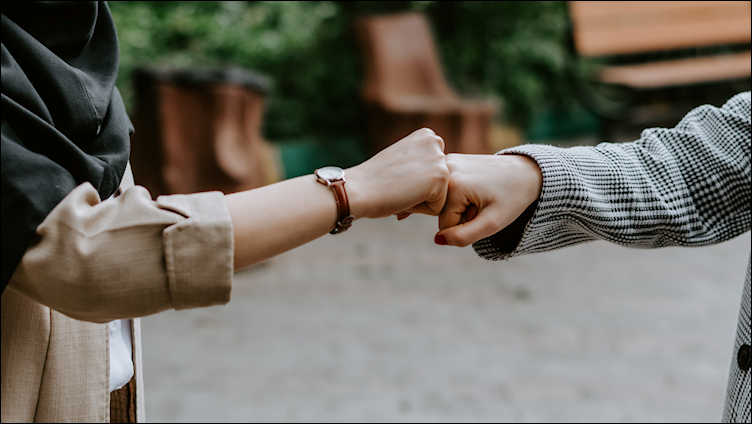Building Relationships
Article provided for The Plumb Club by Kate Peterson, PC Performance Concepts
When you build relationships with your customers, you’re also building your future as a sales professional.
Of course, a job title like Fine Jewelry Associate might seem to imply a certain level of professional status from the very first day of your employment. But anyone who’s been in the business for even a little while knows that there’s a big difference between having a job selling jewelry and being a true jewelry sales professional. That difference largely depends on the relationships you build with the people you serve—in other words, your skill at transforming casual customers into loyal clients.

Kate Peterson
Professionalism and the relationship building that’s part of it actually begin before there’s ever any contact with customers. From the moment you make a conscious decision to view your job as a career, you start to welcome each customer encounter as an opportunity to make a new friend. This outlook is critical to your own job satisfaction as well as the customer satisfaction you’re able to create. It’s reflected in the way you do your work and interact with people at the store— and elsewhere, too. By building good relationships with your customers, you not only enrich their shopping experiences; you also enrich your life.
Relationship building is interwoven in the selling process from the very first steps. When you greet customers and establish rapport, you set the stage for healthy interaction. Through your words, acts, and attitude, you help customers relax and get past the fear that they’ll somehow be pressured into buying something they don’t want. Even without consciously realizing why, they begin to like and trust you. This positive feeling continues to grow as you build rapport and then profile to discover their needs and wants.
If you set your sights on making a friend and creating a long-term relationship, you maximize the chances that good things will happen—for both the customer and you. By injecting your own enthusiasm and personality, your sincere willingness to help meet their needs will shine through.
From that point on, the relationship can truly begin to blossom. Once customers feel certain you care about them first, and making the sale second, they’ll respond to you instead of reacting. They’ll become interested in the relationship you’ve set out to develop.
Of course, it doesn’t end with profiling—or even after you’ve presented merchandise, overcome objections, and closed the sale. Building relationships goes beyond any of these steps. In fact, all of these activities are just the opening chapters in a story that hopefully will extend far into the future.
Admittedly, building relationships with customers does initially involve a buying selling connection. How you maintain and develop that connection is largely up to you, however. Some customers will come back on their own, but it’s your responsibility to give them reasons for doing so. Unless you take the initiative, you’re leaving the whole thing up to chance. Don’t make that mistake!
By following up regularly on purchases—and even visits that don’t end in sales—by paying attention to what each individual shares with you, contacting customers regularly, knowing the important dates in their lives, and being professional in every way, relationships will take root and grow. You can also make use of the tools at your disposal, from the telephone and e-mail to an organized, fact-filled customer service or client book. As you do all of these things, customers will come to view you as their own personal jeweler. Soon it won’t be a matter of where to go when a purchase is on their minds. They’ll automatically turn to you, their friend in the jewelry business.
In your own experiences as a consumer, aren’t you more comfortable buying something from a friend, as opposed to a stranger or just any store clerk? Of course, you are—and so are your customers. So, building relationships with the people who shop with you is a win-win situation. They win by having a resource they trust for their jewelry needs. You win by having customers who turn to you every time they decide to buy jewelry. It’s a relationship that can go on for years—perhaps generations—to come. Do your best to make it happen!

